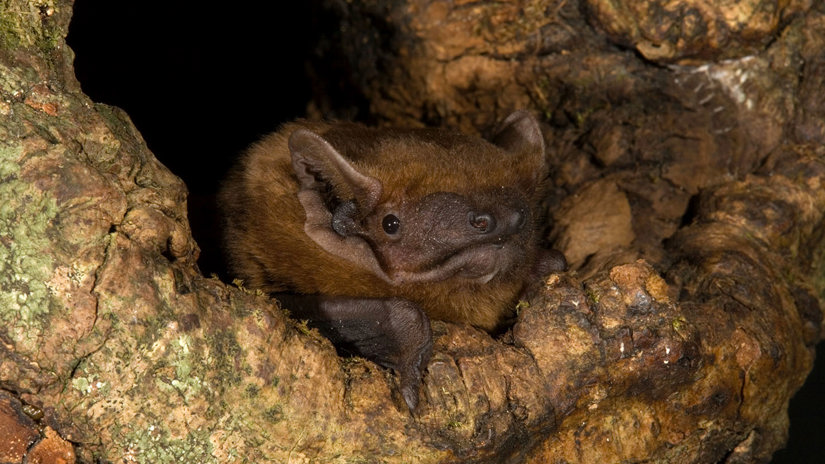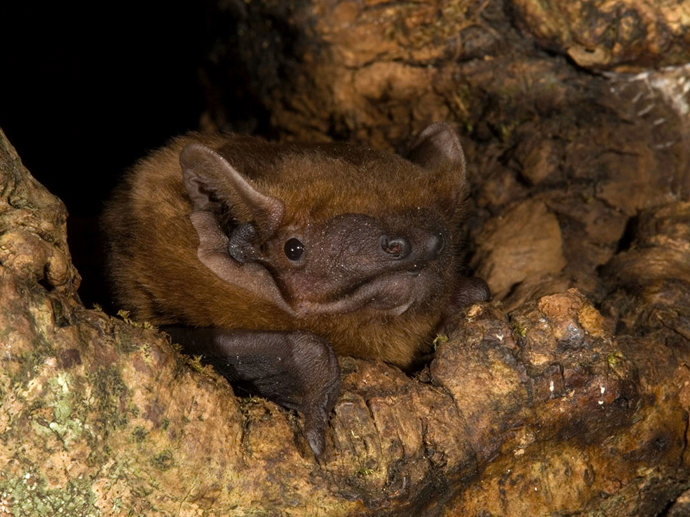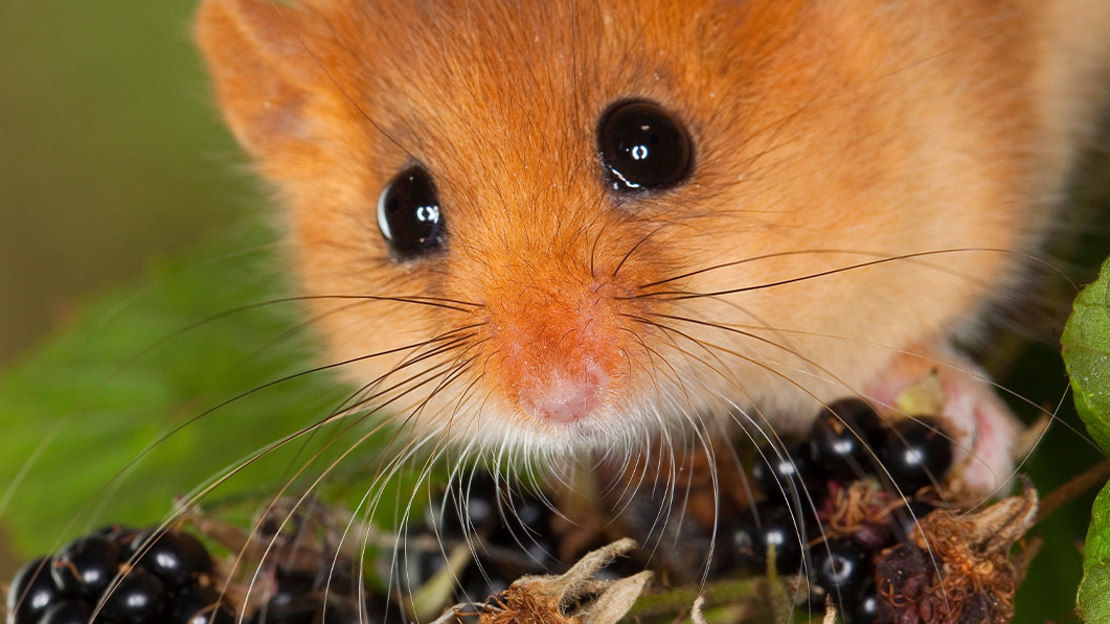Common name: greater horseshoe bat
Scientific name: Rhinolophus ferrumequinum
Family: Rhinolophidae
Habitat: woodland, farmland
Diet: invertebrates
Predators: birds of prey and domestic cats
Origin: native
Rare and highly agile. Look out for the greater horseshoe bat along woodland edges at dawn and dusk. The longest-lived bat in the UK, it has become scarce due to a loss of insect prey and habitat.
Common name: greater horseshoe bat
Scientific name: Rhinolophus ferrumequinum
Family: Rhinolophidae
Habitat: woodland, farmland
Diet: invertebrates
Predators: birds of prey and domestic cats
Origin: native
The greater horseshoe bat is one of the UK’s largest, with a body length of about 5–7cm. It has golden brown fur, round wings, small black eyes and leaf-shaped, pointed ears. It is named after its distinguishing fleshy ‘nose leaves’, which are shaped like a horseshoe.
Not to be confused with: the lesser horseshoe bat. The lesser species is significantly smaller and more common.
Moths, beetles, caddisflies, craneflies and gnats all make up the diet of the greater horseshoe bat. These bats hunt at night, usually catching their prey on the wing, although they sometimes pick up insects from the ground or gather them from vegetation.
When hunting, they wait on a perch, looking out for passing insects. Any larger prey is usually taken to a feeding perch to be eaten – the remains of insects below are a sure sign a bat has been feeding above.

Greater horseshoe bats can live up to 30 years.
The breeding season for this bat is usually during the autumn but can go on into winter. Males reach sexual maturity at two years old and females at three years old. Maternity colonies (groups of pregnant females) of around 50-200 gather together in early May and give birth during June or July. The greater horseshoe normally gives birth to a single pup while hanging upside down, catching the newborn in her wings. The pup is usually weaned after around 45 days.

Credit: David Chapman / Alamy Stock Photo
The greater horseshoe bat hibernates in a winter roost from late autumn until around April. Exact timings depend on weather.
When approaching their resting point of choice, greater horseshoe bats somersault towards it, grasping the perch with their feet.


Joe Bates • 03 Dec 2018
What do British bats do when winter is coming? Find out more about six UK bat species and what you can do to help them.

Credit: Avalon Photoshot License / Alamy Stock Photo
One of the rarest bats in the UK, greater horseshoes are mainly confined to south-west England and south Wales. While in the past they would frequent caves to roost, they now normally choose the roofs of old buildings, such as barns and churches. After emerging at night, the bats tend to hunt along linear features such as woodland edges and hedgerows.
Bats roost upside down because it makes it easier to take off – their wings don’t work like those of a bird.
As with all bats, the greater horseshoe is nocturnal. Look out for them at dusk in a place with no light pollution – and don’t forget your torch!
The greater horseshoe bat is rare, with an estimated population of just under 13,000. Numbers have declined significantly since 1900, although they are now rising.
The loss of woodland and hedgerows and use of pesticides are all threats, depriving bats of hunting grounds and reducing numbers of their prey. The greater horseshoe is protected under UK law, meaning it is an offence to injure, disturb or kill them, or destroy or alter their habitat.

Woodland wildlife is fading before our eyes. Please support our appeal to save rare and threatened species.
Donate now